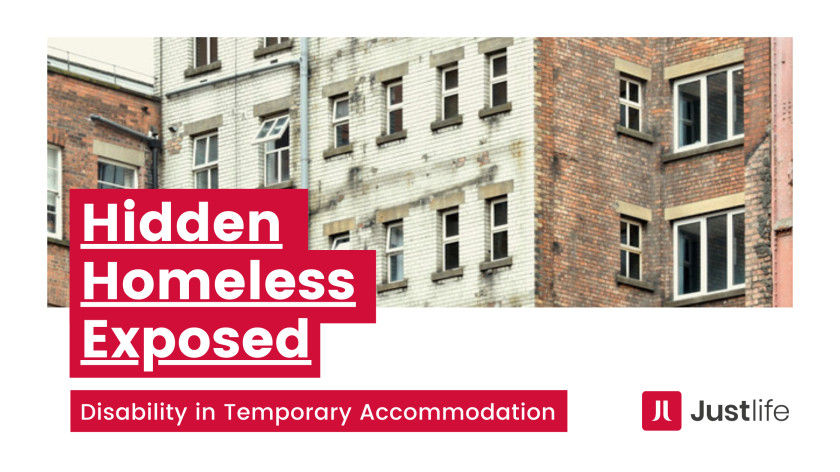


Today is the International Day of People Living with Disabilities (3rd Dec), so we felt it was fitting to kick off this blog series with a focus on one of our recent report’s most surprising findings: the prevalence of disability in hidden homeless populations.
The Equality Act 2010 describes someone as disabled if you have a physical or mental impairment that has a substantial and long-term negative impact on your ability to do normal daily activities. The focus is on the effect rather than the diagnosis.
Using this definition, 7 out of 19 individuals interviewed in our Covid research could be linked to disability. At 37%, this is well above the national average of around 21%, and a surprising discovery as disability was not a focus of our research. We had set out to uncover the effect of the pandemic on single, hidden homeless households, and yet disability was strikingly present in the responses; evident without us even looking for it.
We asked one man about his ability to wash and found that he was in a wheelchair up a flight of stairs, unable to access the shower room on a different floor. Another man told us that self-isolation was not really an issue for him, as his disability had already left him stuck in his room for six years. Both told us they followed the guidelines on washing their hands to prevent the spread of the virus, and yet neither of them could shower.
The fact that disability was so clearly an issue came as a surprise to the research team, which left us wondering what we would have found if we had actually asked about it. Talking to front-line workers however, it quickly became clear that this was no surprise to them.
So why this discrepancy? One answer might be that not everyone living with a disability wants to share their story. Some might not want to be defined by their disability, while others might not have come to terms with it. Others still will be worried about the stigma that is still attached to disability, 25 years after the Disability Discrimination Act was introduced.
But there is more to it than that. We set out to educate ourselves through reading up on research that has been conducted in this area, only to find that there is very little written on the subject (in stark contrast to mental health, substance misuse and crime). It would seem that disability amongst those experiencing homelessness is under-reported.
A problem that is not recognised is unlikely to be addressed. If disability is not talked about in housing and homelessness services, it will not feature in policies, strategies, programmes or budgets. These decisions matter; it is decisions like these that left our research participants unable to shower. This is undignified at the best of times and unsettling during a pandemic.
Over the past couple of decades, disability campaigners have challenged the medical view of disability that treats it as an individual’s bad luck and argued instead for a social model of disability that emphasises barriers in society. A simple example is glasses; without them, a large part of the adult population would be effectively disabled. Hearing aids, ramps and handrails are other well-known adjustments that may make a significant difference to daily living for people who experience physical impairments.
There are still substantial barriers in society for people living with a disability, but these are particularly high for people living in temporary accommodation where assistive technology rarely features. And let’s not forget that most individuals in these types of accommodation have a host of other problems to worry about.
If the social model of disability was adopted throughout public institutions, the emphasis would shift from individuals having to argue their own case (and thinking about whether that is something they want to do), to services mainstreaming support and solutions into their work. Being pro-active rather than re-active in this way could remove at least some barriers/stressors and reinstate some measure of dignity for those who are homeless and living with a disability.
We have only just begun to scratch the surface. More research is needed to get to grips with the extent and nature of this issue, but we can start talking about it now. As long as no-one pays attention, disability, like the majority homeless, will carry on hiding in plain sight.